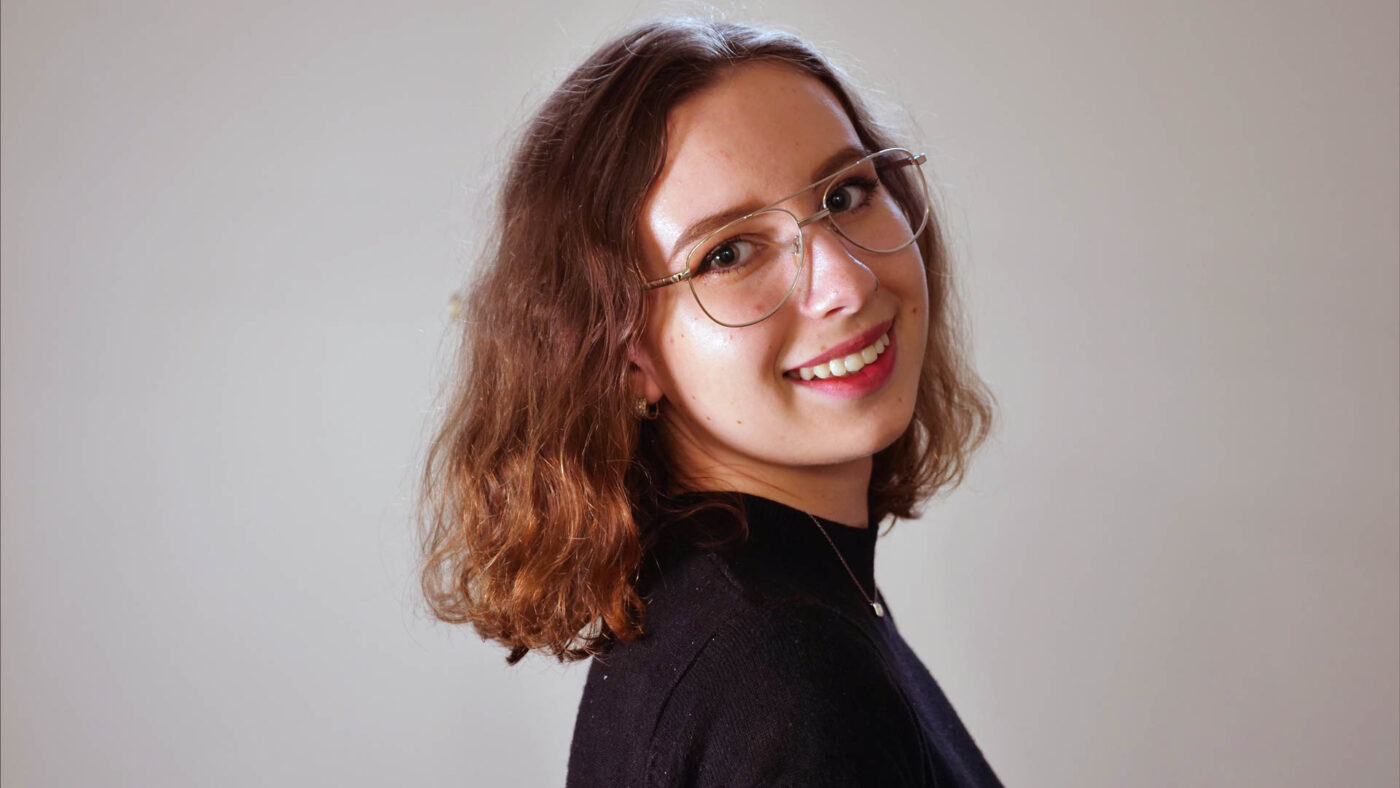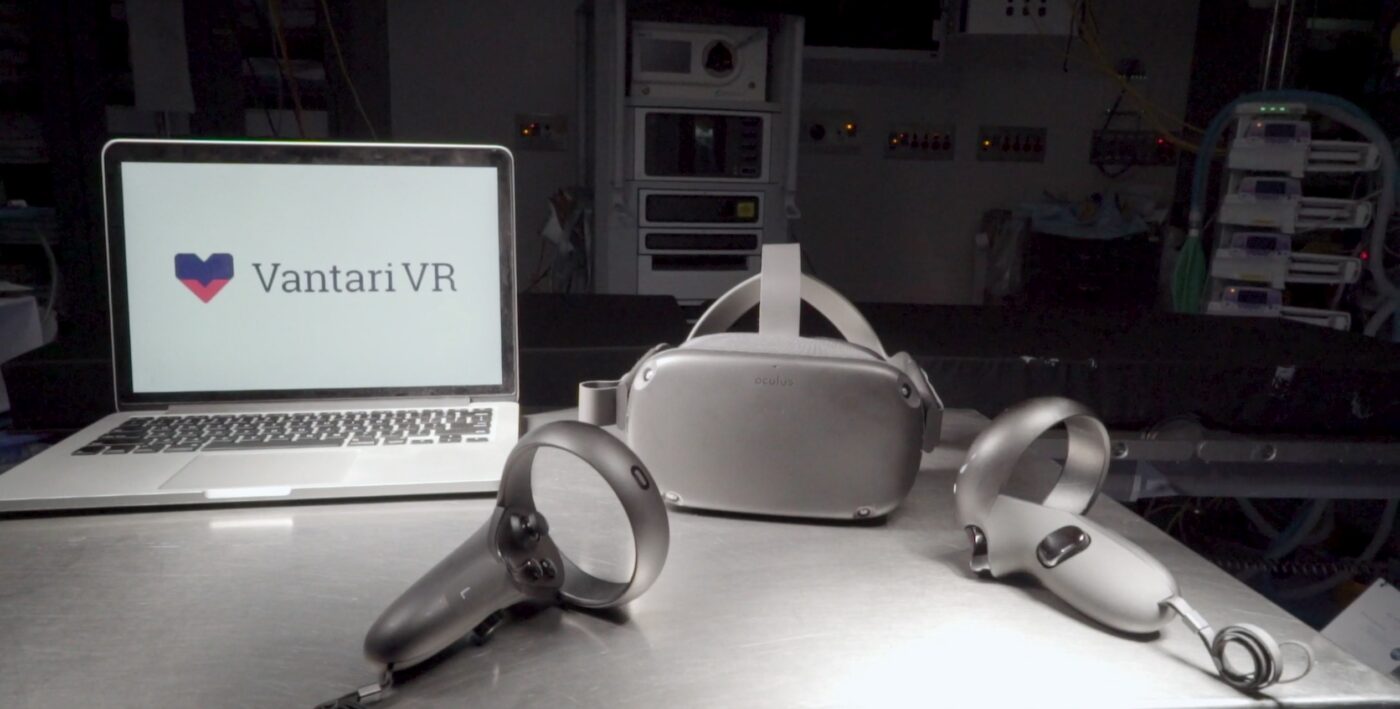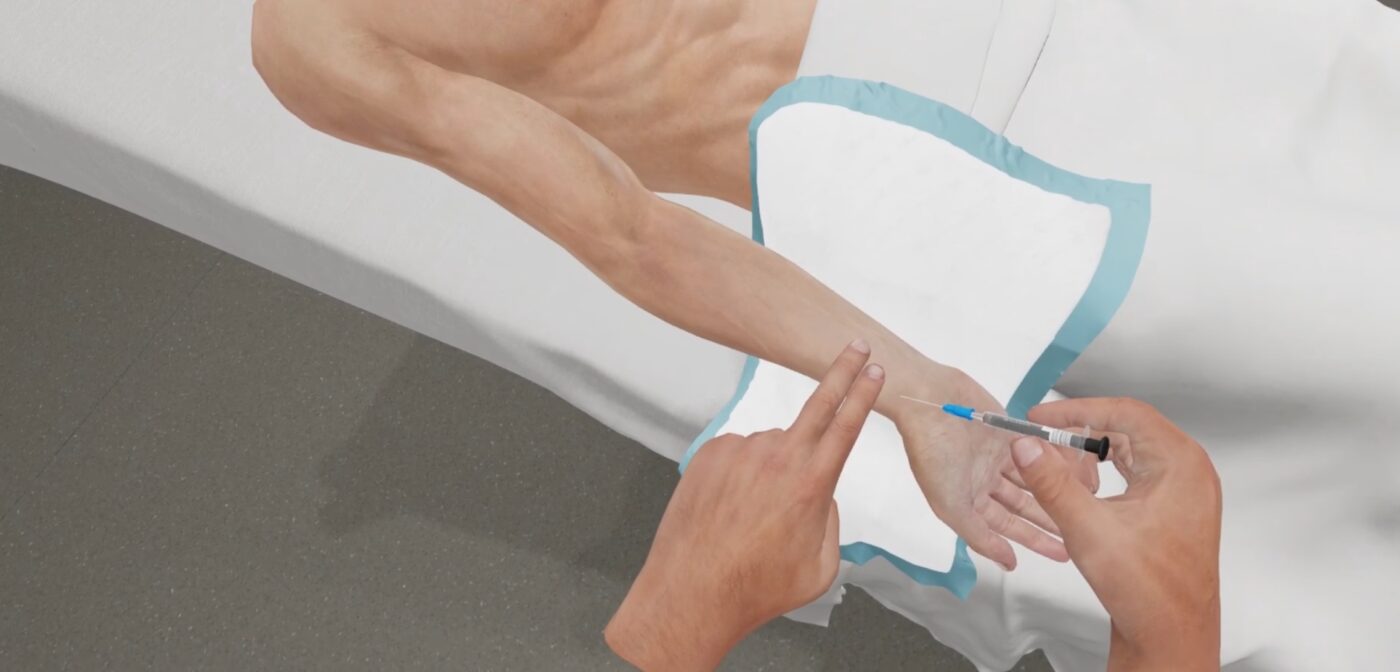Breaking The Mould In The Metaverse: How Women Are Changing The Face Of Medtech
August 27, 2022BruceDayne

Polina Francini reports on how she uses the power of the metaverse to drive medtech innovation.
Getting into the technology and video game industry was always the goal – the industry is one I’m really passionate about, and I’ve always wanted to learn and grow as much as humanly possible.
For the most part, navigating the STEM industry as a woman has always been a wonderful, positive experience, and that positive feeling was only exacerbated by moving into a more specialised area of the STEM industry, medtech. Contributing to the advancement of the medical world, which has so many incredibly positive outcomes for people all around the world, is a great feeling, especially because I’m doing what I love, in illustration and development. I get to discover and gain new knowledge in various aspects of development, not just art, and I’m always expanding my horizons with the help of my team, who are the most talented and wonderful doctors and developers not just in Australia, but based around the world.
It’s an unlikely coupling, but doctors and developers make an amazing team and have the potential to make a hugely positive difference in this world. Together, we’re helping to save the lives of millions and when you’re achieving that while doing what you love, you’re never really working a single day in your life.

The move into medtech
I’ve been in my role as a 2D & 3D Artist in the medtech industry for almost a year now – it’s not something I set out to do, but when Co-Founders/Co-CEOs Vijay and Nish approached me, it really opened my eyes to new and exciting ways in which I could use my skills. As early adopters of the metaverse, the opportunity was really appealing; I was really excited to do something that contributes to saving the lives of so many people in Australia and around the world, while honing my skills as an artist and developer.
A stand-out career highlight was attending the ICC Sydney conference – seeing the banners and illustrations that I’d created, now up on our company’s stand, framing the floor on which we’d connect with other people in the industry who are also looking to make a change, was pretty special. I cherished being able to engage with other people who are interested in revolutionary software like ours, getting the product out there and into the hands of healthcare organisations and professionals that will use it to make a change.
Another highlight would have to be the 2022 Extreme Tech (XTC) Challenge – the world’s largest startup competition for entrepreneurs who are addressing the globe’s most serious challenges. We were all up at 1am as a team, with people from around the world asking us about our technology, and getting to share our work and our vision with them was amazing.
We also just partnered with the University of Wollongong on a research project, and Vantari VR’s training software has been found to reduce medical error by an astounding 40 per cent. The research also found that the software has helped student clinicians to improve performance by 32 per cent and adhere to safety and hygiene by 39 per cent. It’s incredible to have our work validated like this, and I’m so excited by what we will go on to achieve in the metaverse next year and beyond.

Conquering gender bias with discovery and collaboration.
Overall, being in the tech industry has been a wonderful experience – I’ve met a lot of people that love problem-solving and overcoming challenges – something I love to do myself. However, I found that the first, and biggest challenges I experienced were internal and they were during my studies.
At the outset, I met a lot of women in STEM who were experiencing internalised stigma, or gender bias, as it’s not traditionally been a ‘woman’s’ industry. Only one in four IT graduates, and fewer than one in 10 engineering graduates are women. And looking at the bigger industry picture, women make up only 27 per cent of the STEM workforce. A lot of women I met were worried they wouldn’t be able to grow and progress in such a male-dominated industry; these fears had the potential to develop further and prevent women from shooting their shot, or following their true passion. I had a few tutors who mentioned that I might face hardships later on in the industry as a result of gender bias, that it might be hard to break into the industry and that when I did, it would be super competitive. It was really unnerving to hear that. However, when I stepped into the industry and started developing my career, I found it was all about discovery and collaboration. There are so many women out there in the industry that want to connect, to collaborate, and to exchange ideas, opinions and inspiration. It was just a matter of finding the confidence, and stepping outside of my comfort zone.
Also, awareness and accessibility is everything. Becoming aware that the culture is shifting, women are doing fantastic things in the tech industry and there are plenty of groups and platforms out there for these female changemakers to connect and collaborate. With the metaverse making international communication so much more accessible, we’re able to connect with more people than ever before, to access community, education and a world of possibility.

Women are blazing the trail.
Along my path, I’ve met (virtually and physically) a number of inspiring women who are changing the game in the tech industry. I visited the Women in Tech conference in Sydney and met some really impressive women who are making waves in their craft.
Inge Berman spoke at the conference, and her experience in opening her own small indie video game studio was inspiring; starting with 2D projects and then moving into 3D art was a fascinating journey and one that I’m currently on, too. Tokyo-based artist Mania Carter, I think, is so beautiful and inspiring. She launched her own company, Sandstorm Studio in Tokyo and her work as a blender artist is incredible.
There are women working on big movie titles that range from Peter Rabbit to Batman, with jaw-dropping trajectories that I strive for myself as a 3D artist. To me, they’re the goal; having a strong sense of direction and a mastery of technology. They’ve squashed the stereotypes and are doing great things – something I plan to do in the medtech industry, alongside my team.

Medtech is moving fast.
We’re taking medical knowledge and technological skills and developing that every day. It’s crucial for us as developers to immerse ourselves in the medical industry and observe medical advances; to work as a team. It astounds me how much we’ve achieved as a collective, when people get together and merge their specialisms to create a revolutionary product or service that can truly make a difference, especially in such a rapidly changing world.
Over the last through years and during the pandemic, we’ve seen a shortage of hospital beds and of healthcare professionals. It’s been a trying time for clinicians and nurses, but now they have access to training and the acquiring of knowledge that can be accessed at home or in another comfortable setting, where they can upskill and fast-track their proficiency, and go on to save millions.
I hope the industry never stops growing, and the pace of change never slows down, because we need to keep changing lives with access to education, and saving lives with the reduction of medical error. After cancer and cardiovascular disease, medical error is one of the biggest causes of death or injury, so it’s something we need to give time and resources to resolving and preventing.
We can never have enough doctors, designers, developers and artists in this industry and I would love to see more women following their dreams and joining me in the journey towards making a positive difference. Women can achieve anything, it just comes down to motivation and the desire to change the world. I urge women in these industries, and beyond, to follow your passion, do something that satisfies you and, ideally, brings great benefit to the people. If you’re just at the beginning of your journey, take risks, be brave and jump into the unknown – because that’s where the really exciting (and life changing) stuff happens.

About the author
Polina Francini is a 2D & 3D Artist at Vantari VR. With a Bachelor of 3D Design and Animation, and a Diploma in 3D Modelling, Polina supports the creation of Vantari VR’s life-saving technology. Polina’s expertise lies within 3D game-ready assets, game development, UI art, fine art, graphic design, stylised art and creative production. Polina has been honing her craft for over seven years, starting from pen and paper. She then discovered her passion for digital art and 2D animation, which led her to merge her love for technology and video games into a game development career, now bringing her highly creative flair to the medtech industry.
About Vantari VR
Vantari VR is revolutionising the way doctors receive on the job training through its unique ‘flight simulator’ style technology. Brought to life by a team of doctors inspired to provide better learning outcomes and reduce medical error, Vantari VR was launched in 2017 and is now operating in four hospitals across Australia. Vantari VR is setting a new gold standard for medical training, to produce the best doctors and the best medical outcomes by reducing medical error and in turn, saving patients’ lives.
The post Breaking The Mould In The Metaverse: How Women Are Changing The Face Of Medtech appeared first on Women Love Tech.
DMTBeautySpot
via https://dmtbeautyspot.com
Alice Duthie, DMT.NEWS, DMT BeautySpot,


0 comments